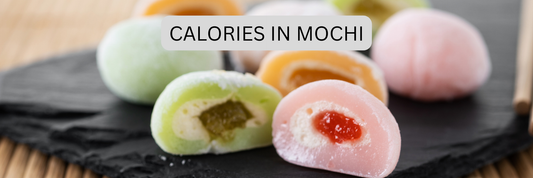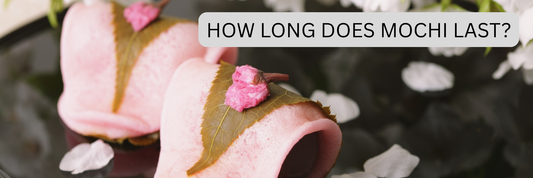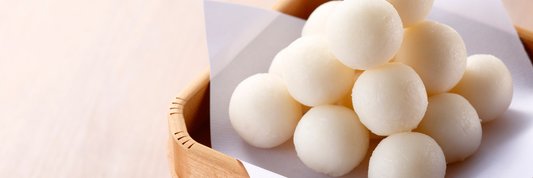“Better than butter” might sound like hyperbole - until you bite into the right buttery cracker. In this guide, we’ll explore everything about buttery crackers: from taste tests of store-bought brands to a fail-proof homemade buttery crackers recipe, plus pairing ideas with cheese, dips, and more. If you’ve searched “buttery crackers” hoping for flavor, crispness, or snack inspiration - stick around. By the end, you’ll know which ones to buy, bake, and enjoy.
What Makes a Great Buttery Cracker
A great buttery cracker delivers three things in harmony: rich flavor, light, flaky texture, and enduring crispness. The buttery flavor should be prominent, but not overwhelmingly greasy; real butter or high-quality butter substitutes often contribute depth, aroma, and mouthfeel. In terms of texture, the ideal cracker is thin and crisp yet delicate — it should "melt" (or crumble) slightly in the mouth. Overly dense or oily versions often fail to deliver that satisfying snap. Salt balance matters: just enough salt to elevate the butter, but not so much that it overshadows it. Another key attribute is shelf stability — a good buttery cracker resists staling and moisture for a reasonable time, thanks to proper fat emulsion, packaging, and low residual moisture. Beware of pitfalls: some crackers feel greasy, others turn limp after a few days, and some have muted butter flavor. When you evaluate crackers (or your own homemade version), focus on that trifecta — flavor, texture, and staying crisp.

Top Store-Bought Buttery Crackers (Taste Test & Reviews)
When shopping for buttery crackers, chances are you’ll compare popular brands. In recent taste-tests, crackers are judged blind for crispness, buttery intensity, salt balance, and mouthfeel. For example, in one test by Epicurious, the best crackers were those that scored high on “buttery, salty, and tender” while remaining light and flaky — not dense or under-seasoned. In another, Allrecipes sampled six brands, discarding any that fell flat in texture or flavor. In our own evaluation, we score each based on flavor, crunch, aftertaste, and value. Below is an overview:
| Brand | Score / Highlights | Strengths | Weaknesses / Use Cases |
|---|---|---|---|
| Ritz (classic) | High | Balanced buttery flavor, reliable crisp | Not the richest, readily available |
| Brand B | Medium-High | Intense butter, good melt | Slightly oily |
| Brand C | Medium | Great price, acceptable taste | Slightly bland or less crisp over time |
| Brand D | Niche / premium | Unique flavors, artisanal | Higher price, limited availability |
Each cracker may excel in a specific use — one might be best for cheese boards, another for snacking alone. Later sections will suggest ideal pairings based on each’s profile.
How to Make Homemade Buttery Crackers
Nothing beats the aroma and satisfaction of homemade buttery crackers. At the core is a simple ratio: flour + butter + salt, often with a little sugar or milk/cream to bind. In practice, start by cutting cold, cubed butter into flour until the mix resembles coarse sand; add liquid (egg, cream, or water) just until it holds together. Roll it very thin (2–3 mm), dock (prick) the surface to prevent puffing, and cut into shapes. Bake on a hot sheet until golden and crisp. For crispness, try baking at moderate heat and then lower to dry out residual moisture. Key tips:
- Use high-fat butter (e.g. European-style) for richer flavor
- Chill the dough before rolling so fat stays solid
- Roll thin and evenly
- Prick liberally so steam escapes
- After baking, allow crackers to cool fully on a wire rack before storing
Variations abound: add dried herbs, garlic, smoked paprika, or cheese to the dough for flavor twists. But the fundamentals remain: maintain low moisture, promote browning, and store airtight for shelf life.

Serving & Pairing Suggestions
Once you have buttery crackers — store-bought or homemade — the fun begins. These crackers are ideal vehicles for flavor. Here are strategic pairings:
Cheese & charcuterie: milder buttery crackers pair beautifully with soft cheeses (Brie, goat cheese) so the cracker doesn’t dominate; richer buttery ones can support richer cheeses (aged cheddar, blue cheese).
Dips & spreads: hummus, olive tapenade, whipped ricotta, pâté, or sweet fruit spreads balance well with buttery crisp.
Recipes / uses: crush buttery crackers to use as a crispy topping (for casseroles, gratins), or use them in savory pie crusts.
Snack board styling: use clusters of crackers interspersed with nuts, olives, and dried fruit for contrast.
While pairing, note flavor profiles: herb-butter crackers pair nicely with Mediterranean spreads; smoky buttery crackers might work with grilled meats or bold cheeses. The key is balance — let your buttery cracker shine, but complement it with flavors that elevate.
Health, Nutrition & “Better-for-you” Versions
“Buttery cracker” may sound indulgent, so health-conscious readers will ask: what about calories, fat, sodium? A typical buttery cracker might deliver ~6–10 g fat (mostly from butter) and a significant sodium dose. To choose smarter options:
- Scan the ingredients: prioritize crackers that list butter (or dairy fat) early, with few additives / preservatives
- Watch serving size and calculate per-cracker nutrition
- Look for reduced-sodium, whole-grain, or higher-fiber buttery crackers
- Explore versions using healthier oils (e.g. avocado oil) or butter blends
- Consider homemade versions you control — you can reduce salt or fat
For many snackers, moderation is the key. Use buttery crackers as a treat or part of a balanced plate rather than a constant snack. And always pair with protein or fiber so you don’t end up overdoing them.
Frequently Asked Questions (FAQ)
Are buttery crackers the same as butter biscuits?
Not exactly. Though both involve butter, biscuits (in some regions) are softer and leavened; buttery crackers aim for crisp, dry snap rather than crumb.
How should I store buttery crackers so they stay crisp?
Store in airtight containers, preferably with silica gel or a small desiccant. Keep away from humidity and avoid storing next to strong-smelling items.
Can I substitute margarine or oil for butter?
You can, but flavor and texture may suffer. Butter brings water and milk solids that help with crisp browning. Margarine or oil-only versions may be flatter or greasier.
How long do buttery crackers last?
Commercial buttery crackers often last several months unopened; once open, aim to consume within 1–2 weeks for best texture. Homemade ones are best eaten within a week, stored airtight.
Which buttery crackers are best for baking / recipes?
You want crackers that stay crisp under toppings — avoid overly oily ones. Mid-range buttery crackers with moderate fat and good crunch tend to work best in casseroles or as crumb crusts.
Conclusion
Buttery crackers are deceptively simple, yet executing them well — whether store-bought or homemade — requires attention to flavor, texture, and storage. In this guide we covered:
- What defines a great buttery cracker
- How to evaluate and choose among top store-bought options
- A go-to homemade recipe + tips
- Pairing ideas and use cases
- Nutrition considerations and smarter alternatives
If you’re new, start with a reputable store-bought favorite (like Ritz or a highly rated alternative), then try the homemade recipe above to compare. Want crispier results? Tweak dough thickness or baking times as you refine. For more snack ideas, check out our other guides on cracker toppings, charcuterie boards, and homemade savory snacks.
Read More:







